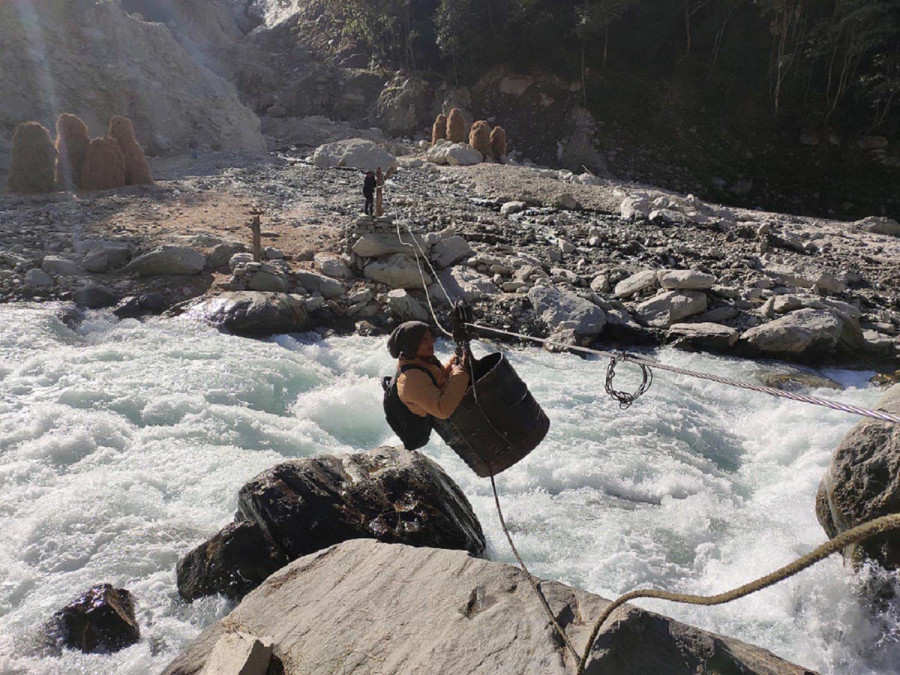Editorial
‘Tuins’ of death
Despite the government’s efforts, it is troubling that ‘tuins’ continue to exist in Nepal, taking more lives.
For many in Nepal, crossing a roaring river on a tuin (basically a metal rope) strung high between the banks, is still a reality. Only a few days ago, a 45-year-old man died after falling into the Mahakali river while trying to get across it using an improvised tuin in the Dumling area of Darchula district. It is an all too familiar incident, as the district has seen multiple such fatalities.
In the first week of January, too, a 10-year-old boy met with the same fate. The incident that took Jaya Singh Dhami’s life in 2021 wrenches our hearts even today. All in all, 28 people have lost their lives to tuins above the Mahakali river in 26 years. Many tuins in other rivers have also claimed lives. However, as per a report in Kantipur last year, “the government does not even have an integrated record on tuin-related death”.
People are compelled to use tuins on a daily basis due to the unavailability of suspension bridges in many places in Nepal. Delays in completion and lack of budget to build bridges could be one reason. Another could be a compulsion to go to the Indian markets to shop for the daily necessities in Darchula. In many other places in the country, even when students go to school, they have to rely on tuins.
The government has taken some steps to prevent tuin accidents. During his premiership, KP Sharma Oli had pledged to end the use of such crossings with utmost priority. In 2016, the government issued the “Public Tuin Removal Procedure” to remove tuins. In 2018, the Council of Ministers brought ‘Rules on Fund Operation Relating to Rescue and Assistance of Persons Affected by Tuin Accidents’ to “prevent, control and discourage the use of tuin as well as rescue and help the victims of tuin accident and their family”. The government was lauded for this step.
Similarly, in 2018, the Ministry of Federal Affairs and General Administration also sent a letter to all local units, instructing them to stop the construction of tuins and replace the old ones. Following the decision of the government of Nepal in 2015 to replace the tuins built in different parts of Nepal with suspension bridges, 105 out of the 131 possible tuins were done away with. Additionally, the government had brought an action plan of constructing 11 suspension bridges to replace tuins in Mahakali. Of them, two have been completed, and two are under construction, but seven are still solely limited to paper, as per the Kantipur report.
It is troubling that tuins continue to exist in Nepal, taking more lives. However, their use has not been controlled by prioritising affected areas. For instance, bridges are built where they are not needed while neglecting areas desperately short in safe crossings. This calls for immediate action. The federal government still handles road and bridge construction projects that are supposed to be run by local and provincial governments.
Allowing local and regional governments to do the job by providing them with adequate budgetary and human resources would help target disadvantaged areas and the displacement of tuins. While the country fords the frontiers of modern science, the need to remove these ancient and dangerous infrastructure cannot be overemphasised. These all are preventable deaths; we just need better policy interventions.




 8.12°C Kathmandu
8.12°C Kathmandu














